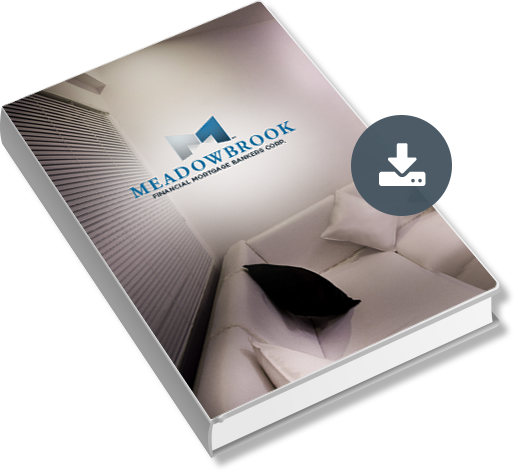Search Blog Posts by Blog Topic
Mortgages for Self-Employed Borrowers | An In-Depth Guide
July 25, 2022
Just like every rose has its thorn, self-employment comes with its share of potential drawbacks. This becomes particularly obvious when you set out to get a mortgage for buying a home. Fortunately, while getting a mortgage as a self-employed individual can be more difficult than qualifying for one if you have a regular job, you may still think about becoming a homeowner if you meet some requirements and follow a few measures.
Are You Self-Employed?
From a lender’s perspective, you may qualify as a self-employed borrower if you have at least 25% ownership in a business, be it a corporation, a sole proprietorship, or a partnership. Independent service providers and contractors fall under the self-employed bracket. You’ll also qualify as a self-employed borrower if you work for a business as a gig worker and receive Form 1099-MISC instead of Form W-2.
A lender might also view you as self-employed if a major portion of your income comes from:
- Royalties
- Rent payments
- Interest/dividends
Mortgages for Self-Employed Borrowers
If you earn any income that comes with a Form 1099, you can be sure that a lender will view it as self-employment income. In this case, you’ll need to get through a few roadblocks before you may qualify for a mortgage. People who don’t plan to include their self-employment income in their mortgage applications need to realize that lenders will still look at their tax returns to determine how much money they make or lose. Further, if you plan to write off business losses against income, you run the risk of an underwriter subtracting the losses from your otherwise-qualifying income.
Looking to Purchase a Home on Long IslandContact Us
Just how much scrutiny your application receives depends on the mortgage provider you select, your income, as well as the type of business you run. Since there is no formal contract of employment to fall back on, lenders typically ask for proof of income to determine if a borrower can afford to make monthly payments. Asking for additional proof to ensure that there is stability in income is common, as is determining if you have adequate cash flow to deal with low-earning periods.
The Two-Year Requirement
Even before looking at your income, most lenders will want to determine if you’ve been self-employed for a minimum of two years. According to Freddie Mac, sellers might be able to justify providing mortgages to borrowers with at least 12-month self-employment work histories, provided they meet certain criteria. For instance, you may qualify if you’ve been self-employed for 12 months and held a job in the same field for at least two years prior to the switch.
Do You Receive W-2s?
If you receive W-2s, documenting your income for a mortgage application is fairly easy. All you need to do is provide copies of your W-2s for the preceding two years along with your last two pay stubs. You don’t need to provide tax returns unless you have considerable tax-deductible employee expenses or you earn a tidy sum as income from investments or commissions.
Self-employed borrowers with W-2s may also submit copies of their bank, retirement, and investment account statements. In this case, there is an increased possibility of approval if an underwriter finds your income to be adequate and your credit score to be satisfactory.
Self-employed individuals who don’t receive W-2s have to follow a more difficult path. While they need to provide copies of their personal accounts, they typically also need to submit their personal tax returns, business account statements, business tax returns, profit and loss statements, as well as year-to-date balance sheets.
Self-Employed Mortgage Documents
You may expect a lender to look at your income stability and the nature of your self-employment before making a decision. Applying for a mortgage as a self-employed individual requires that you provide different types of documentation. It may include:
- Bank statements
- Personal and business tax returns (including schedules K-1, 1120, and 1120S)
- Profit and loss statements
- Balance sheet
- Relevant state or business license
Are Self-Employed Mortgage Borrowers at a Loss?
Most mortgage providers don’t look at self-employed borrowers as ideal candidates. The reason they look at regular employees with favor is because of their steady and easily verifiable incomes. When compared to self-employed borrowers, regular employees with W-2s need to go through considerably lesser paperwork when applying for mortgages.
One distinct challenge in applying for a mortgage as a self-employed individual is you’ll need to address business expenses. From the taxation point of view, deducting these costs can help bring down your taxable income. However, when you apply for a mortgage, a lower annual income might lead a lender to wonder if you earn enough money to purchase a home. In addition, lenders commonly seek low loan-to-value (LTV) ratios from self-employed individuals. This usually translates to making a larger-than-usual down payment.
Improving the Odds of Approval
Most lenders look at self-employed mortgage borrowers as high-risk propositions. This is mainly because of the preconceived notion that self-employed individuals can come with highly unpredictable income patterns. While people from this bracket find it harder than regular employees to get mortgages, following a few measures may help improve the odds of a successful application.
Scrutinize Your Finances
Take a close look at your personal and business finances to determine your existing financial situation even before you start looking for a mortgage. Ideally, you should keep your individual and business accounts separate. This is because lenders can have a tough time distinguishing between the two if there’s any kind of overlap.
No matter whether you’ve filed your personal and business income separately or together, it’s crucial that you document all the sources of your income to build a stronger application for the underwriter. Bear in mind that while a lender would want to look at your personal finances, it would also want to determine how well your business is doing.
Here are some questions that can help you establish where you stand:
- How much do you currently owe toward personal and business debt?
- Do you make enough money through your business to cover your mortgage and other payments?
- How much can you afford to pay toward monthly mortgage payments?
- How much can you afford to pay to cover closing costs and as down payment?
- Do the preceding two years as a self-employed individual show steady or an increase in income?
Look at Your Credit Score
Your credit score plays a crucial role in whether or not you qualify for a mortgage and the terms that a lender offers. For instance, this factor has a significant effect on self-employed mortgage rates.
Lenders typically request your credit reports from all three credit bureaus, along with corresponding FICO Scores. This helps them evaluate the risk you pose as a borrower. Ranging from 300 to 850, the higher your credit score, the better the chances of approval. Besides, lenders tend to offer the lowest interest rates to applicants with exceptional credit scores.
Looking to Purchase a Home on Long IslandContact Us
It’s important that you look at your credit score before a lender does. This way, if you have less-than-perfect credit, you may work on improving it before applying for a mortgage. This step also helps you identify any possible errors in your credit reports that might cause your credit score to drop. If this is the case, you may contact the credit bureau in question to get the error fixed.
Inspect Your Debt-to-Income Ratio
Debt-to-income (DTI) ratio refers to the percentage of your gross monthly income that’s required to make your monthly debt repayments. For example, if your gross monthly income is $5,000 and your combined monthly debt payments amount to $2,000, your DTI ratio is 40%. Lenders pay close attention to the DTI ratios of self-employed mortgage seekers, and they view applicants with high DTI ratios as high-risk borrowers.
According to Fannie Mae, the maximum allowed DTI ratio for a manually underwritten mortgage is 26%. It can go up to 45% if a borrower fulfills credit score and other specific requirements. In addition, there can be exceptions in some cases such as cash-out refinance and high LTV refinance transactions. If your DTI exceeds 45%, consider bringing it down before you apply for a mortgage.
Offer to Make a Large Down Payment
Lenders view borrowers who start by having higher-than-usual equity in their homes as less likely to default on their mortgages. As a result, offer to make as large a down payment as possible without stretching your resources.
Have Substantial Cash Reserves
If you’ve saved a substantial amount of money, it shows lenders you can continue making monthly payments even if you suffer a temporary financial setback. Ideally, you should be able to show enough cash reserves to cover 12 to 24 months of mortgage payments, insurance payments, property taxes, and the home’s regular upkeep.
Paying off as much of your consumer debt as possible before you apply for a mortgage is ideal. While this helps bring down your DTI ratio by reducing your monthly payments, the additional cash flow you have access to might also result in a lender offering you a higher loan amount.
Select a Suitable Lender
Not all mortgage providers view self-employed applicants in the same manner. For example, most big banks follow stringent eligibility criteria that might not work well for self-employed individuals. Specialized mortgage lenders, on the other hand, tend to offer self-employed people with good credit scores and adequate income a better opportunity to qualify for a mortgage.
Self-Employed Mortgage Loan Alternatives
Much like homebuyers who have regular jobs, self-employed mortgage seekers also get multiple options from which to choose. These include conventional mortgages as well as alternatives to traditional mortgages.
Conventional Loans
A majority of the mortgages issued in the U.S. classify as conventional conforming loans, guidelines for which are set by Freddie Mac and Fannie Mae. Lenders that provide conforming loans require self-employed applicants to show at least two years of self-employed work history. You typically need a credit score of over 620 to qualify for a conventional loan. You’ll also need to DTI ratio of 43% or lower.
USDA Loans
Backed by the U.S. Department of Agriculture, USDA loans are made available for the purchase of rural property as well as homes in suburban areas of large cities. These loans come with no down payment requirements, although you need to show at least two years of self-employed work history. To qualify, you need a credit score of 640 or higher. In addition, your monthly mortgage payment, including taxes and insurance, should not exceed 29% of your monthly income.
VA Loans
The U.S. Department of Veteran Affairs backs VA loans. While you may apply as a military veteran, you can also apply if you’re still in military service, a surviving spouse, or a reservist. As a veteran, you don’t have to make any down payment. There is no prescribed minimum credit score requirement, which is why it may vary from one lender to the next.
Looking to Purchase a Home on Long IslandContact Us
Non-Qualified Mortgages
Non-qualified mortgages (non-QMs) are ones that you may qualify for by providing alternative forms of documentation. Lenders who provide non-QMs tend to follow more relaxed credit requirements than those who offer conventional mortgages. Besides, you may even qualify with a DTI that’s over 43%. Meadowbrook Financial provides non-QMs for people with fair/average credit, for those looking at larger-than-usual loan amounts, for investors, as well as for foreign nationals.
Conclusion
Self-employed people who have good creditworthiness and earn enough money may think about getting mortgages to go the homeownership way. While the going might not be as easy as it is for people with regular jobs, you still get different options from which to choose. What’s important is for you to look at your existing financial situation and your ability to make payments going forward.
If you’re wondering how to calculate income for self-employed borrowers or need help to determine which mortgage option might work best for you, consider speaking with a loan officer who works with a reputed mortgage provider.
Ready To Get Started?
Fill out the form below and a mortgage professional will get back to you shortly.

First Time Homebuyer’s Guide
Considering homeownership but not sure where to begin? The Meadowbrook Financial Mortgage Bankers Corp. guide to home buying will make the process easy all in one packet.
Recent Articles

Are You Better Off As a Renter or…
25 July, 2024It is common for people who have started families or have reached a certain age to feel the pressure of buying a home. While expectations…

Mortgages for Seniors – Enjoying Your Golden Years
6 July, 2024There are various reasons seniors choose to get mortgages, from upsizing or downsizing to tapping into the equity they’ve built in their homes. While getting…

What is Better, a Fixed- or Adjustable-Rate Mortgage?
12 June, 2024Becoming a homeowner is an incredible milestone that should be celebrated! Once you have decided that you are ready for this next step, it is…


